Ninja Hattori-kun Road
Himi City, Toyama is full of characters created by Fujiko Fujio Ⓐ! How exiting! Nin Nin!
Himi City, Toyama Prefecture is the hometown of Fujiko Fujio Ⓐ, known for works such as “Ninja Hattori-kun,” “Kaibutsu-kun,” “Pro Golfer Saru,” and “The Laughing Salesman.” Many works of Mr. Fujiko Fujio Ⓐ are on display around “Kozenji temple” where he was born and Himimachi shopping street (also known as “Manga Road” or “Ninja Hattori-kun Road”). The area where these works are exhibited is collectively called “Fujiko Fujio Ⓐ Manga World.”
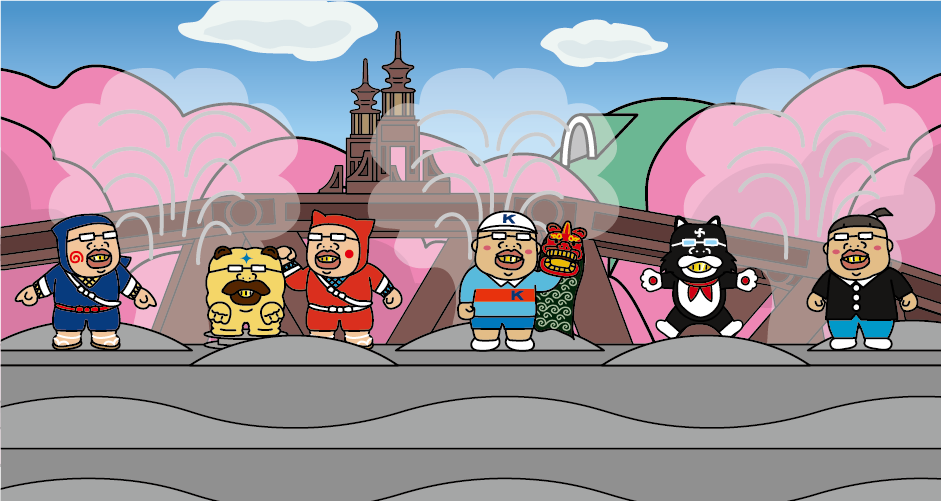
There is a bridge called “Niji no Hashi” (also known as “Ninja Hattori-kun Automation Clock“) that spans the Minato River, flows at the southern end of the Himimachi shopping street. At the scheduled time, the automation clock starts to move and Hattori-kun and Kemumaki, who is a rival to Hattori-kun, and the others have a ninja showdown. At the end of the show, Kenichi, a first son of the Mitsuba family who Hattori-Kun freeloads on, performs Shishimai Lion dance, a traditional performing art of Himi City.
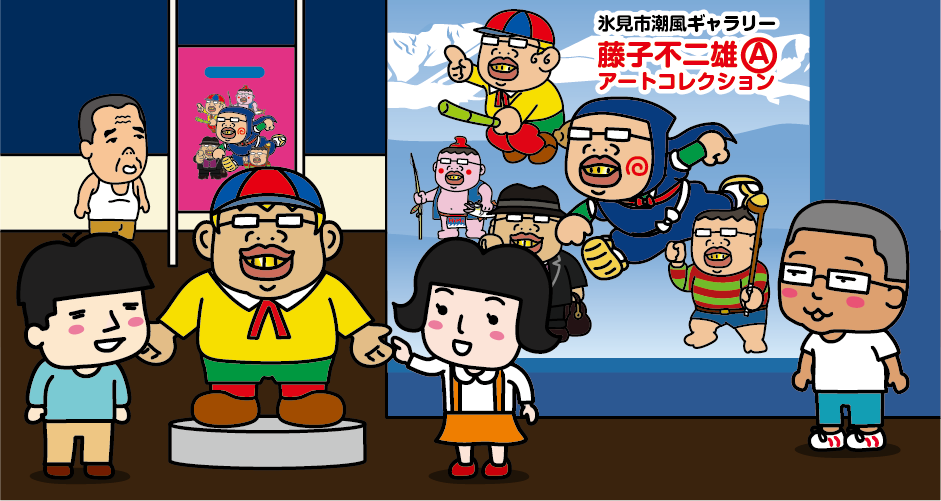
At the “Himi City Shiokaze Gallery” on “Manga Road (Ninja Hattori-kun Road),” “Ninja Hattori-kun” and “Kaibutsu-kun” sculptures as well as original drawings of “Pro Golfer Saru” and “The Laughing Salesman” are on display. You can take a photo with these sculptures.
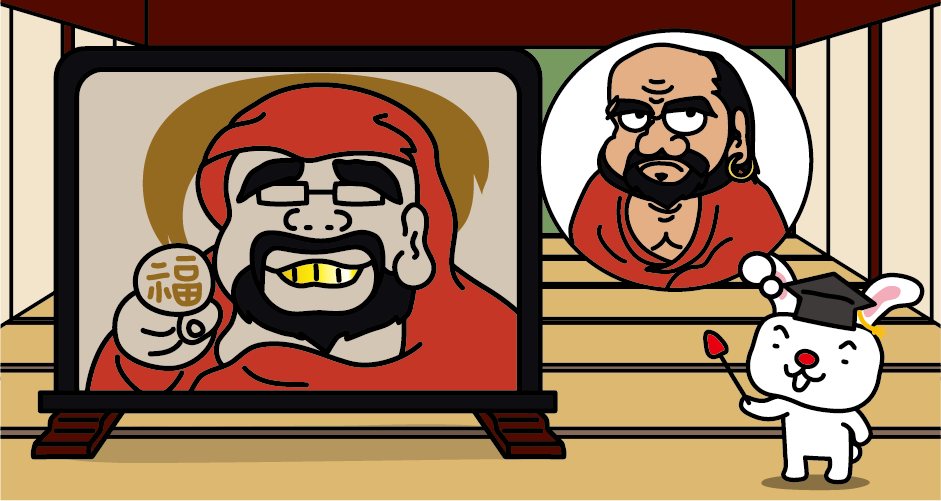
Kozenji Temple is an ancient temple of the the Soto Zen Buddhism with about a 700 year history, related to the Maeda family, the feudal lord of the Kaga Domain, and this is where Fujiko Fujio Ⓐ was born. His father was the 49th head priest of Kozenji Temple and the family lived here until they moved to Takaoka City, Toyama Prefecture when Fujiko Fujio Ⓐwas the fifth grade of elementary school. In the precincts, there are large stone sculptures of “Ninja Hattori-kun,” “Kaibutsu-kun,” “Pro Golfer Saru,” and “The Laughing Salesman.” The Daruma Daishi (founder of Zen Buddhism) screen, which looks like Moguro Fukuzou drawn by Fujiko Fujio Ⓐ and the desk that he inherited from Osamu Tezuka and used in Room 14 in Tokiwa-so are also on display. As a side note, Takaoka City in Toyama Prefecture is the hometown of Fujiko F Fujio. You can also enjoy the works by Fujiko F Fujio at Takaoka City Museum of Art.
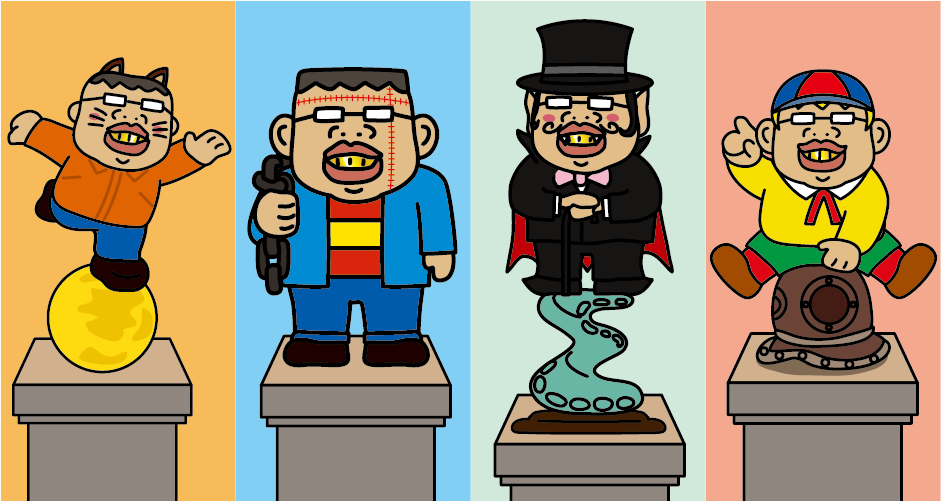
In the area between JR Himi Station and the Ise-Omachi intersection (“Kaibutsu-kun Street”), there are four sculptures of the Prince of the Monster Land “Kaibutsu-kun”, “Dracula”, “Werewolf” and “Franken”.
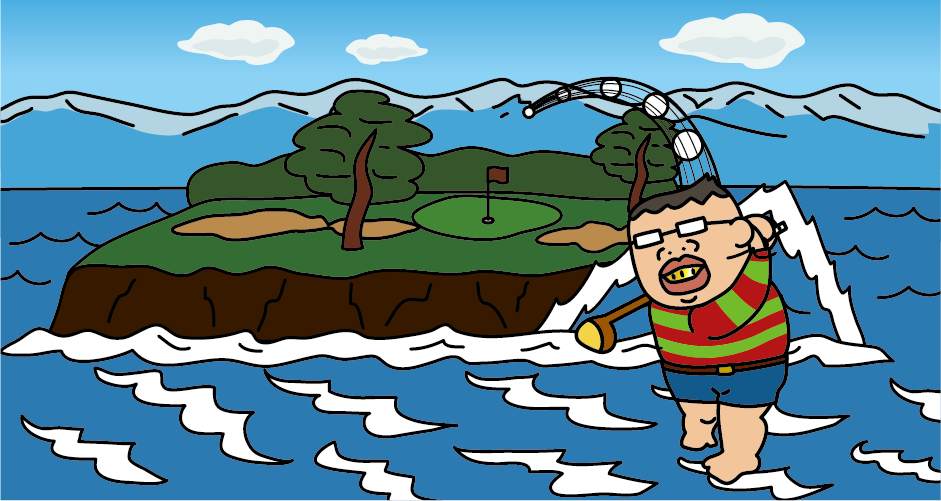
Chuo-machi Pocket Park (“Pro Golfer Saru Pocket Park”) along Route 415 is famous as a place representing the worldview of “Pro Golfer Saru” and great spot to take photos. There is a life-size sculpture of Sarumaru Sarutani, shooting super shots at an imaginary golf course that floats on the Tateyama Mountain Range and Toyama Bay drawn on the large wall. You can take a photo with the Sarumaru Sarutani sculpture.
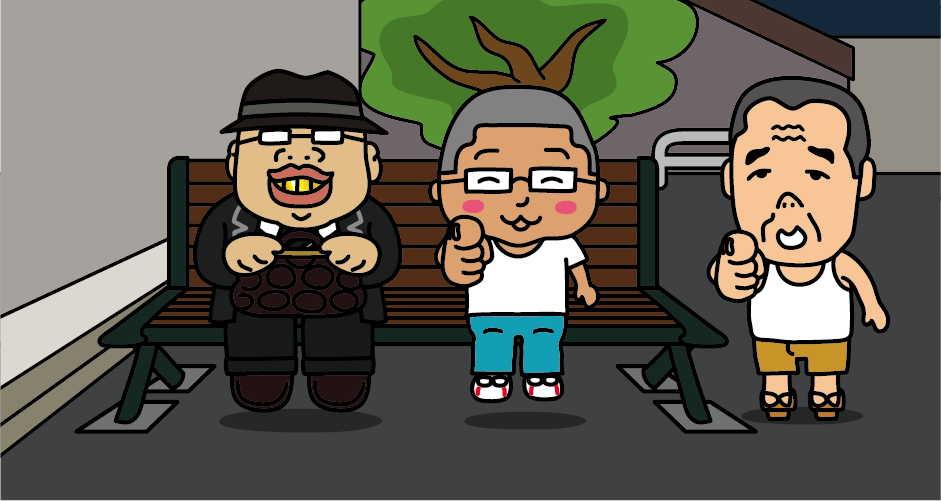
There is a bench on which Moguro Fukuzou from “The Laghing Salesman” is sitting (“Moguro Fukuzou Smile Bench”). It is a popular photo spot where you can sit next to him. It is along Route 415, about 100m to the south of Minatogawa where “Ninja Hattori-kun Automation Clock” is located (Honmachi intersection).
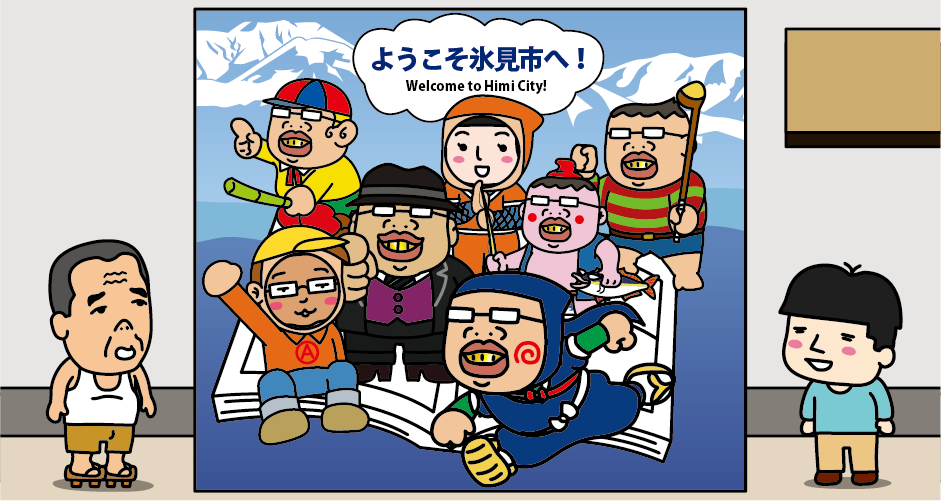
“Himi Banya-gai Harbour Market” is the Michi no Eki roadside station where you can enjoy seafood directly delivered from Toyama Bay and Himi fishing port, hot springs, and free footbaths. The “Kaibutsu-kun” wrapping bus is running from JR Himi Station to Himi Banya-gai. In “Himi Banya-gai”, there are Face Cutout Board of Fujiko Fujio Ⓐ’s four major characters, “Ninja Hattori-kun”, “Kaibutsu-kun”, “Pro Golfer Saru,” “The Laughing Salesman” and also “Himibouzu-kun,” the mascot for Himi City designed by Fujiko Fujio Ⓐ. You can enjoy shooting photos with these characters by putting your face in the Face Cutout Board with a painted picture of ninja and boy.

On the JR Himi Line and JR Johana Line, there is the “Ninja Hattori-kun” wrapping train is running. On the train, Ninja Hattori-kun provides tourist information along the train line.
Access to Hattori-kun Road (Himimachi Shopping Street)
[Railway]
From Tokyo
It takes about 2 hours from JR Tokyo Station to JR Toyama Station by Hokuriku Shinkansen.
From Osaka
It takes about 1 hour and 30 minutes from JR Osaka Station to JR Tsuruga Station by limited express train. Transfer to the Hokuriku Shinkansen at JR Tsuruga Station, and it takes about 1 hour from JR Tsuruga Station to JR Toyama Station.
[Airplane]
It takes about 1 hour from Haneda Airport to Toyama Airport. It takes about 25 minutes from Toyama Airport to JR Toyama Station by shuttle bus.
Transfer to the Ainokaze Toyama Railway at JR Toyama Station and it takes about 20 minutes to get to Takaoka Station on the Ainokaze Toyama Railway. Transfer to JR Himi Line at Ainokaze Toyama Railway Takaoka Station,about 30 minutes to JR Himi Station. About 15 minute- walk from JR Himi Station.

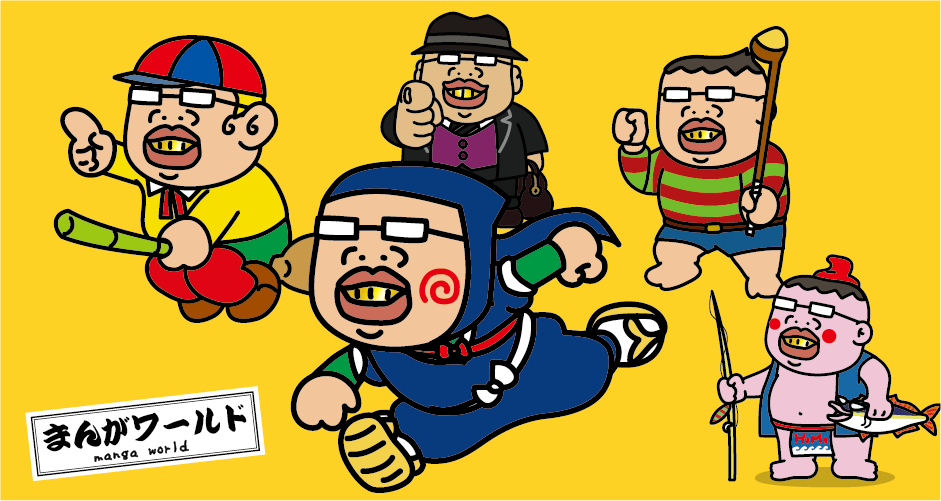


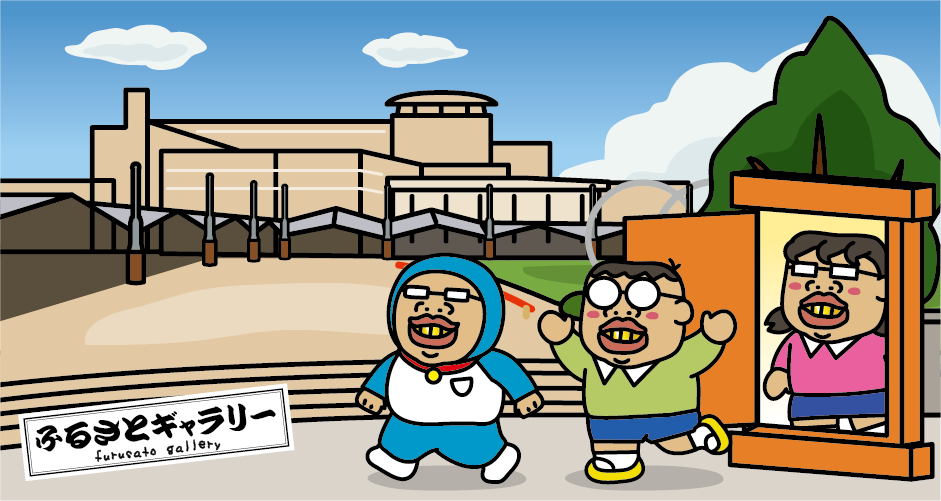

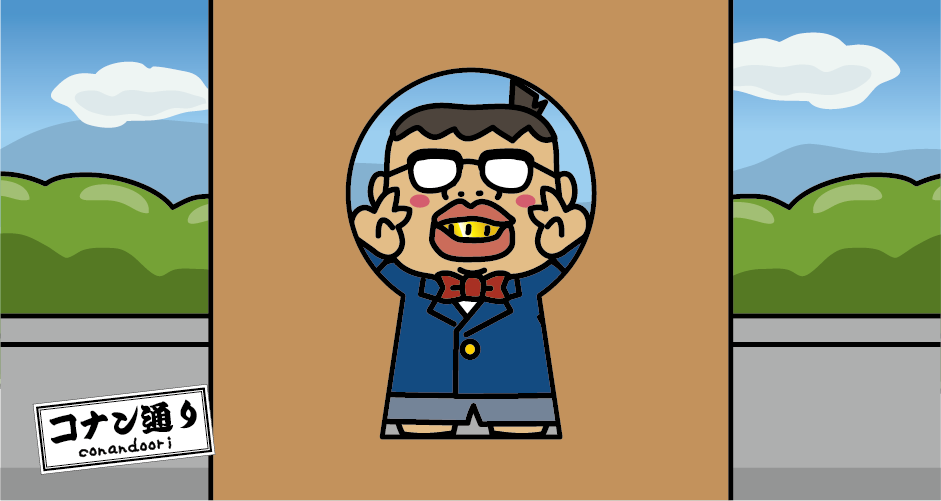


You need to login to comment on an article.